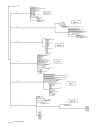Molecular characterization of the HIV-1 gag nucleocapsid gene associated with vertical transmission
- PMID: 16600029
- PMCID: PMC1459197
- DOI: 10.1186/1742-4690-3-21
Molecular characterization of the HIV-1 gag nucleocapsid gene associated with vertical transmission
Abstract
Background: The human immunodeficiency virus type 1 (HIV-1) nucleocapsid (NC) plays a pivotal role in the viral lifecycle: including encapsulating the viral genome, aiding in strand transfer during reverse transcription, and packaging two copies of the viral genome into progeny virions. Another gag gene product, p6, plays an integral role in successful viral budding from the plasma membrane and inclusion of the accessory protein Vpr within newly budding virions. In this study, we have characterized the gag NC and p6 genes from six mother-infant pairs following vertical transmission by performing phylogenetic analysis and by analyzing the degree of genetic diversity, evolutionary dynamics, and conservation of functional domains.
Results: Phylogenetic analysis of 168 gag NC and p6 genes sequences revealed six separate subtrees that corresponded to each mother-infant pair, suggesting that epidemiologically linked individuals were closer to each other than epidemiologically unlinked individuals. A high frequency (92.8%) of intact open reading frames of NC and p6 with patient and pair specific sequence motifs were conserved in mother-infant pairs' sequences. Nucleotide and amino acid distances showed a lower degree of viral heterogeneity, and a low degree of estimates of genetic diversity was also found in NC and p6 sequences. The NC and p6 sequences from both mothers and infants were found to be under positive selection pressure. The two important functional motifs within NC, the zinc-finger motifs, were highly conserved in most of the sequences, as were the gag p6 Vpr binding, AIP1 and late binding domains. Several CTL recognition epitopes identified within the NC and p6 genes were found to be mostly conserved in 6 mother-infant pairs' sequences.
Conclusion: These data suggest that the gag NC and p6 open reading frames and functional domains were conserved in mother-infant pairs' sequences following vertical transmission, which confirms the critical role of these gene products in the viral lifecycle.
Figures




Similar articles
-
Characterization of mother-infant HIV type 1 gag p17 sequences associated with perinatal transmission.AIDS Res Hum Retroviruses. 1999 Jul 1;15(10):875-88. doi: 10.1089/088922299310584. AIDS Res Hum Retroviruses. 1999. PMID: 10408724
-
Maintenance of an intact human immunodeficiency virus type 1 vpr gene following mother-to-infant transmission.J Virol. 1998 Aug;72(8):6937-43. doi: 10.1128/JVI.72.8.6937-6943.1998. J Virol. 1998. PMID: 9658150 Free PMC article.
-
Evaluation of genetic diversity of human immunodeficiency virus type 1 NEF gene associated with vertical transmission.J Biomed Sci. 2003 Jul-Aug;10(4):436-50. doi: 10.1007/BF02256435. J Biomed Sci. 2003. PMID: 12824703
-
The vertical transmission of human immunodeficiency virus type 1: molecular and biological properties of the virus.Crit Rev Clin Lab Sci. 2005;42(1):1-34. doi: 10.1080/10408360490512520. Crit Rev Clin Lab Sci. 2005. PMID: 15697169 Review.
-
Overview of the Nucleic-Acid Binding Properties of the HIV-1 Nucleocapsid Protein in Its Different Maturation States.Viruses. 2020 Sep 29;12(10):1109. doi: 10.3390/v12101109. Viruses. 2020. PMID: 33003650 Free PMC article. Review.
Cited by
-
Characterization of HIV-1 subtype C envelope glycoproteins from perinatally infected children with different courses of disease.Retrovirology. 2006 Oct 20;3:73. doi: 10.1186/1742-4690-3-73. Retrovirology. 2006. PMID: 17054795 Free PMC article.
-
Characterization of HIV-1 envelope gp41 genetic diversity and functional domains following perinatal transmission.Retrovirology. 2006 Jul 4;3:42. doi: 10.1186/1742-4690-3-42. Retrovirology. 2006. PMID: 16820061 Free PMC article.
-
Molecular mechanisms of HIV-1 mother-to-child transmission and infection in neonatal target cells.Life Sci. 2011 May 23;88(21-22):980-6. doi: 10.1016/j.lfs.2010.09.023. Epub 2010 Oct 1. Life Sci. 2011. PMID: 20888841 Free PMC article. Review.
-
Breadth and magnitude of antigen-specific antibody responses in the control of plasma viremia in simian immunodeficiency virus infected macaques.Virol J. 2016 Dec 1;13(1):200. doi: 10.1186/s12985-016-0652-x. Virol J. 2016. PMID: 27903274 Free PMC article.
-
Post-translational intracellular trafficking determines the type of immune response elicited by DNA vaccines expressing Gag antigen of Human Immunodeficiency Virus Type 1 (HIV-1).Hum Vaccin Immunother. 2013 Oct;9(10):2095-102. doi: 10.4161/hv.26009. Epub 2013 Aug 13. Hum Vaccin Immunother. 2013. PMID: 23941868 Free PMC article.
References
-
- Ahmad N. The vertical transmission of human immunodeficiency virus type 1: molecular and biological properties of the virus. Crit Rev Clin Lab Sci. 2005;42:1–34. - PubMed
-
- Ahmad N. Molecular mechanisms of human immunodeficiency virus type 1 mother-infant transmission. Adv Pharmacol. 2000;49:387–416. - PubMed
-
- Ahmad N. Maternal-Fetal Transmission of Human Immunodeficiency Virus. J Biomed Sci. 1996;3:238–250. - PubMed
-
- Blanche S, Rouzioux C, Moscato ML, Veber F, Mayaux MJ, Jacomet C, Tricoire J, Deville A, Vial M, Firtion G. A prospective study of infants born to women seropositive for human immunodeficiency virus type 1. HIV Infection in Newborns French Collaborative Study Group. N Engl J Med. 1989;320:1643–1648. - PubMed
-
- Mok JQ, Giaquinto C, De Rossi A, Grosch-Worner I, Ades AE, Peckham CS. Infants born to mothers seropositive for human immunodeficiency virus. Preliminary findings from a multicentre European study. Lancet. 1987;1:1164–1168. - PubMed
Publication types
MeSH terms
Substances
LinkOut - more resources
Full Text Sources
Medical
Molecular Biology Databases
Research Materials
Miscellaneous

